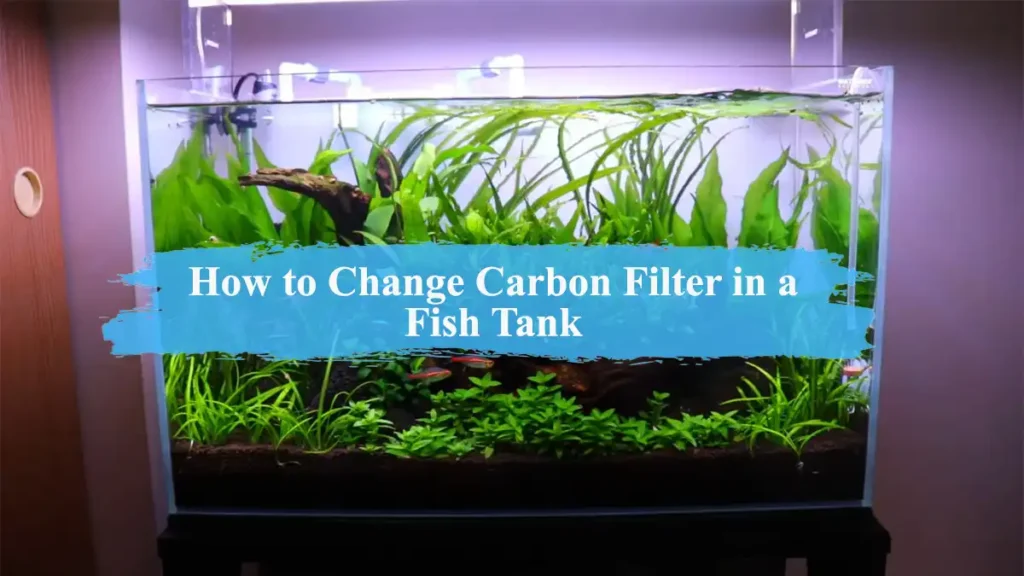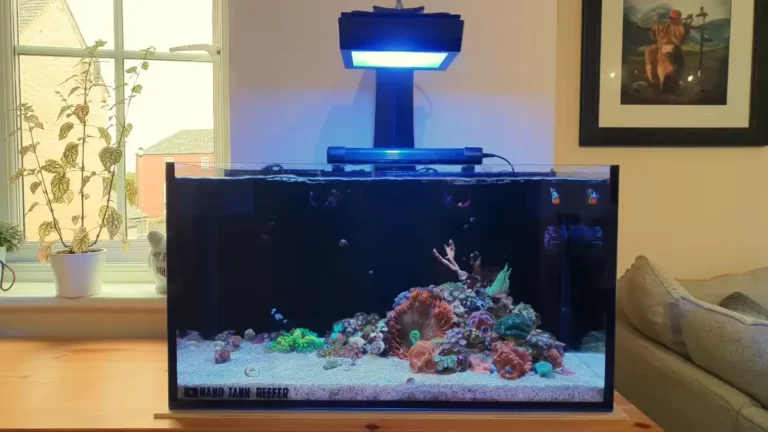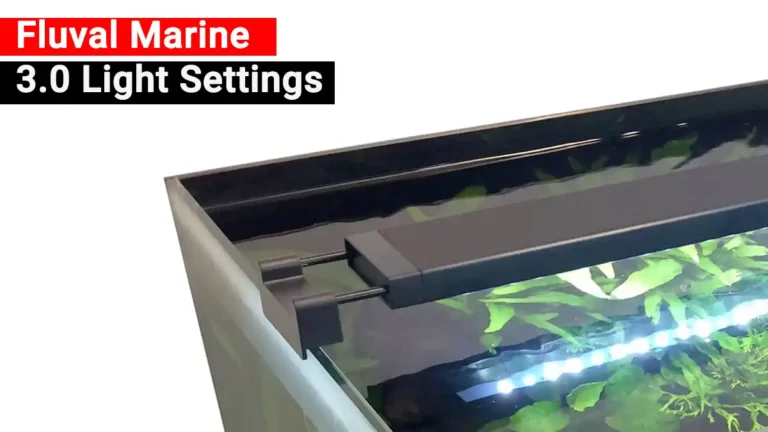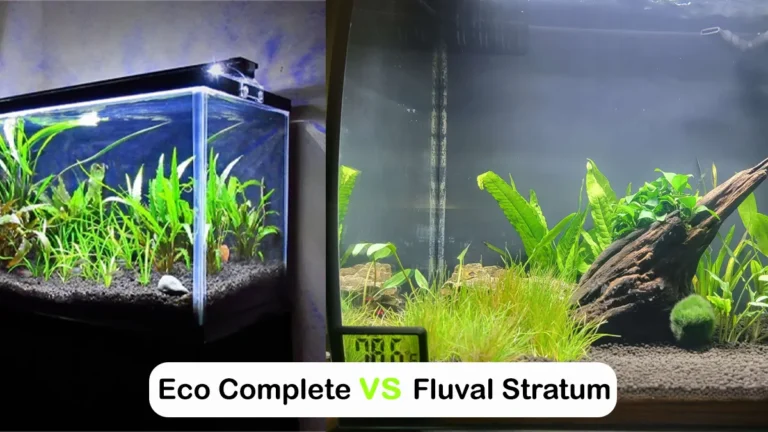How to Change Carbon Filter in a Fish Tank?
Maintaining a fish tank can be a rewarding experience, but it requires some effort to keep the water clean and healthy for the fish. One of the most important components of a fish tank is the carbon filter, which helps to remove impurities and debris from the water. However, over time, the carbon filter can become clogged and lose its effectiveness, which is why it is important to know how to change it.
Changing a carbon filter may seem like a daunting task, but with the right tools and knowledge, it can be done easily and efficiently. In this article, we will provide step-by-step instructions on how to change a carbon filter in a fish tank, as well as some tips for maintaining a healthy aquarium. Whether you are a seasoned fish tank owner or a beginner, this guide will help you keep your fish happy and healthy.

Understanding the Importance of a Carbon Filter
A carbon filter is an essential component of any fish tank. It helps to keep the water clean and clear, which is important for the health and well-being of your fish. In this section, we’ll discuss the role of a carbon filter and signs that indicate it’s time to change the filter.
Role of Carbon Filter
The primary role of a carbon filter is to remove impurities from the water. The filter is made up of activated carbon, which is highly porous and has a large surface area. As water flows through the filter, the activated carbon absorbs impurities like chemicals, toxins, and odors. This helps to keep the water clean and clear, which is important for the health of your fish.
In addition to removing impurities, a carbon filter can also help to regulate the pH level of the water. The filter can absorb excess acids or bases, which helps to keep the pH level within a safe range for your fish.
Signs of a Dirty Carbon Filter
Over time, the activated carbon in the filter will become saturated with impurities. When this happens, the filter will no longer be effective at removing impurities from the water. It’s important to change the filter regularly to ensure that it continues to work properly.
One sign that it’s time to change the carbon filter is a decrease in water flow. If the water is not flowing through the filter as quickly as it should, it could be an indication that the filter is clogged with impurities. Another sign is a change in water color or odor. If the water is cloudy or has a foul smell, it could be an indication that the filter is no longer effective.
In conclusion, a carbon filter is an important component of any fish tank. It helps to keep the water clean and clear, which is important for the health and well-being of your fish. By understanding the role of a carbon filter and signs that indicate it’s time to change the filter, you can ensure that your fish tank remains a healthy and happy environment for your fish.
Choosing the Right Carbon Filter
When it comes to choosing the right carbon filter for your fish tank, there are a few factors to consider. In this section, we’ll go over the two main considerations: size and compatibility, as well as the types of carbon filters available.
Size and Compatibility
The first thing to consider when choosing a carbon filter is size. You need to make sure that the filter you choose is compatible with your tank size and the type of fish you have. If you have a large tank or a lot of fish, you’ll need a larger filter to keep the water clean and healthy.
Another important factor to consider is compatibility. Not all filters are compatible with all tanks, so you need to make sure that the filter you choose is designed for your tank type. For example, if you have a saltwater tank, you’ll need a filter that is specifically designed for saltwater.
Types of Carbon Filters
There are several types of carbon filters available, each with its own advantages and disadvantages. Here are the most common types:
- Activated Carbon Filters: These filters are the most common type of carbon filter and are effective at removing impurities from the water. They work by adsorbing impurities onto the surface of the carbon. Activated carbon filters need to be replaced every 4-6 weeks.
- Pelletized Carbon Filters: Pelletized carbon filters are similar to activated carbon filters, but they use pellets instead of granules. They are more effective at removing impurities from the water, but they are also more expensive.
- Impregnated Carbon Filters: Impregnated carbon filters are activated carbon filters that have been impregnated with other substances, such as zeolite or ion-exchange resins. These filters are effective at removing specific types of impurities, such as ammonia or heavy metals.
- Carbon Block Filters: Carbon block filters are made from compressed carbon and are effective at removing impurities from the water. They are more expensive than other types of carbon filters, but they last longer and are more effective.
When choosing a carbon filter, it’s important to consider your specific needs and the needs of your fish. Each type of filter has its own advantages and disadvantages, so it’s important to choose the one that is best suited to your tank and your fish.
Steps to Change a Carbon Filter
Changing a carbon filter in a fish tank is an essential part of fish tank maintenance. This section will provide a step-by-step guide on how to change a carbon filter in a fish tank.
Preparation
Before starting, it is important to gather all the necessary tools and materials. These include a replacement carbon filter, a bucket, aquarium pliers, and a clean cloth.
The next step is to turn off the filter and unplug it from the electrical outlet. It is also important to unplug any other equipment connected to the filter, such as an air pump or heater.
Removal of Old Filter
The first step in removing the old filter is to disconnect the hoses from the inlet and outlet ports on the back of the tank using aquarium pliers. Next, remove the powerhead from the aquarium. If you have an under-gravel filter, lift one end of the plate to release the water flow.
Once the filter is disconnected, remove it from the tank and place it in a bucket. It is important to avoid spilling any water from the filter into the tank as this can cause a disturbance in the tank’s ecosystem.
Installation of New Filter
The next step is to install the new carbon filter. Start by cleaning the filter housing with a clean cloth to remove any debris or residue. Then, insert the new filter into the housing, making sure it is properly seated.
Reconnect the hoses to the inlet and outlet ports on the back of the tank using aquarium pliers. If you have an under-gravel filter, replace the plate and ensure it is properly seated.
Once the new filter is installed, plug in the filter and any other equipment connected to it. It is important to allow the filter to run for a few hours before adding any fish to the tank.
In conclusion, changing a carbon filter in a fish tank is a simple process that can be done with a few basic tools and materials. By following these steps, you can ensure the health and well-being of your fish and maintain a clean and healthy aquarium.
Read More: Can a TV Stand Hold a Fish Tank?
Maintaining Your Carbon Filter
Keeping your carbon filter in good shape is crucial to maintaining a healthy and clean environment for your fish. In this section, we’ll discuss the two main aspects of maintaining your carbon filter: regular cleaning and knowing when to replace it.
Regular Cleaning
Regular cleaning of your carbon filter is essential to ensure that it continues to function properly. Over time, debris and waste will accumulate in the filter, reducing its effectiveness. Here are some steps to follow when cleaning your carbon filter:
- Turn off the filter: Before cleaning the filter, turn off the filter and unplug it from the power source.
- Remove the filter media: Remove the filter media from the filter housing and rinse it with clean water. Do not use soap or any other cleaning agents.
- Clean the filter housing: Use a soft brush to clean the inside of the filter housing. Be sure to remove any debris or waste that has accumulated.
- Reassemble the filter: Once you have cleaned the filter media and housing, reassemble the filter and plug it back in.
- Test the filter: Turn on the filter and make sure that it is working properly.
When to Replace
Knowing when to replace your carbon filter is just as important as regular cleaning. Over time, the carbon in the filter will become saturated and lose its effectiveness. Here are some signs that it may be time to replace your carbon filter:
- Reduced water flow: If you notice a decrease in water flow, it may be due to a clogged or saturated carbon filter.
- Foul odors: If your aquarium has a foul odor, it may be due to a saturated carbon filter.
- Poor water quality: If you notice that the water quality in your aquarium has deteriorated, it may be due to a saturated carbon filter.
As a general rule, carbon filters should be replaced every four to six weeks. However, if you notice any of the above signs, it may be necessary to replace the filter sooner.
In conclusion, maintaining your carbon filter is crucial to keeping your fish healthy and happy. By following the steps outlined above, you can ensure that your filter continues to function properly and provides a clean and healthy environment for your fish.
Troubleshooting Common Issues
Filter Not Fitting
If the new carbon filter does not fit in the aquarium filter, it could be due to the wrong size. Check the manual or the packaging to ensure that the filter is the right size for the filter. If the size is correct, then it could be due to the filter being inserted incorrectly. Make sure that the filter is inserted in the correct orientation and that it is securely in place. If it still does not fit, try using a different brand of filter.
Fish Stress After Filter Change
It is normal for fish to experience stress after a filter change. This is because the filter is an important part of the aquarium’s ecosystem, and any changes to it can affect the water quality. To minimize stress, it is recommended to change the filter during a regular water change. This will help to dilute any changes to the water chemistry. It is also important to monitor the fish for any signs of stress, such as lethargy or loss of appetite. If the fish appear stressed, perform a partial water change to further dilute any changes to the water chemistry.
Read More: How to Raise KH Without Raising pH: A Comprehensive Guide
Frequently Asked Questions (FAQ)
Can I clean and reuse a carbon filter cartridge?
Carbon filter cartridges are designed for one-time use. Cleaning and reusing them can potentially reintroduce harmful substances back into the tank. It’s best to use a new cartridge for optimal filtration.
Is it necessary to change the entire filter system or just the carbon cartridge?
In most cases, only the carbon filter cartridge needs to be changed. However, if your filter system includes additional media, such as biological or mechanical filters, you might need to clean or replace those as well. Refer to the manufacturer’s instructions for specific guidance.
Can I replace the carbon filter with a different type of media?
While carbon filters are highly effective in removing impurities, you can explore other filtration options based on your specific needs. However, it’s essential to research and ensure the alternative media can provide the necessary filtration and meet the requirements of your fish.
What should I do if I accidentally damage the filter during the change?
Accidents happen! If you accidentally damage the filter or any of its components, it’s best to reach out to the manufacturer for assistance. They can provide guidance on replacement parts or offer solutions to fix the issue.
Conclusion
Congratulations, fellow fish enthusiasts! You’ve successfully mastered the art of changing the carbon filter in your fish tank. By following these steps, you’re providing your fish with a clean and healthy aquatic home. Remember to adhere to the recommended filter change frequency and keep an eye out for signs of a clogged filter.
As always, feel free to refer back to this guide or consult a fish tank care specialist if you have any further questions or concerns. Happy fishkeeping, and may your underwater world thrive with life and vitality!






